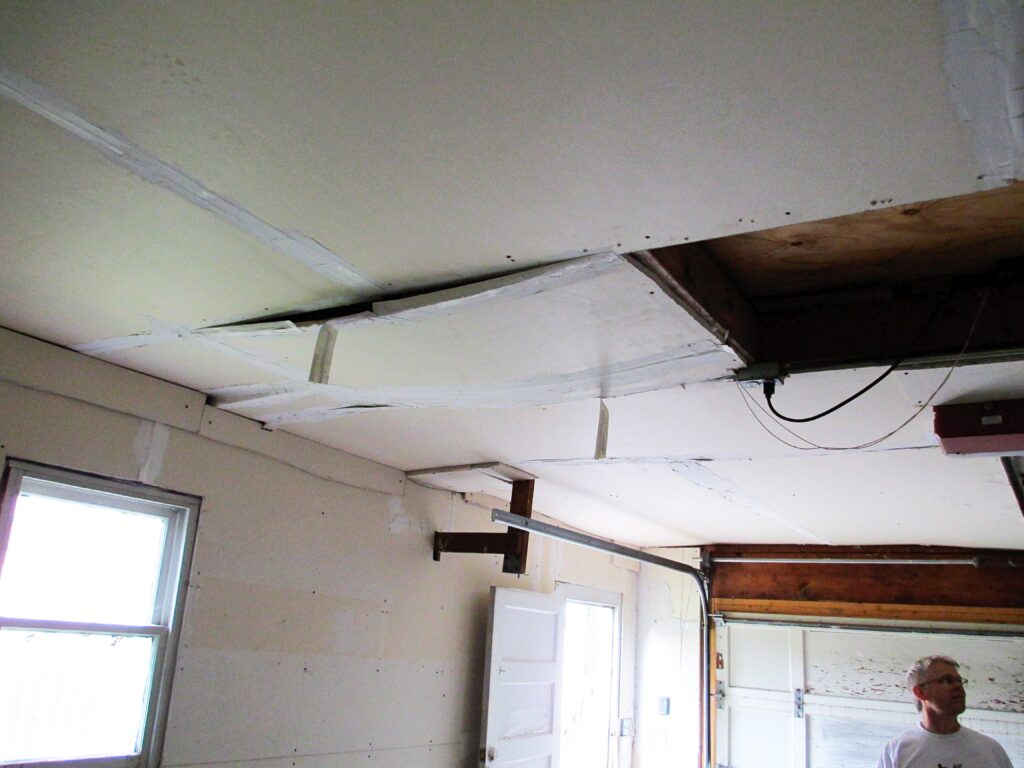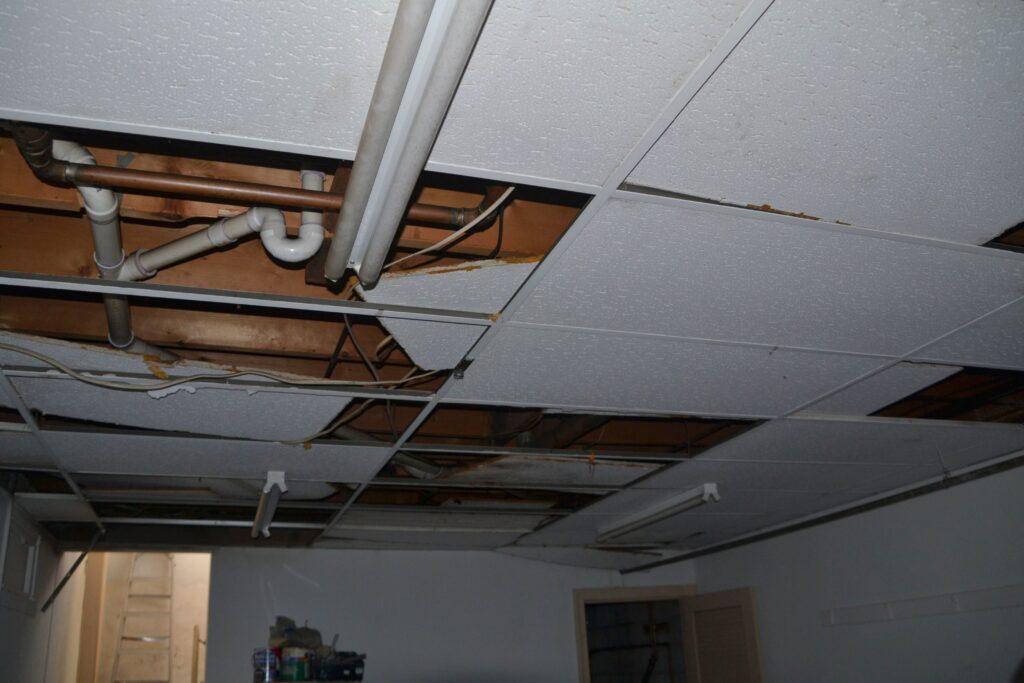Ceiling Water Damage Repair: Restore Your Home’s Interior in New Orleans
Ceiling water damage is a serious concern for homeowners in New Orleans, a city known for its humid climate, frequent rainstorms, and susceptibility to hurricanes. The damage not only ruins the aesthetic appeal of your home but can also compromise its structural integrity, leading to costly repairs if not addressed promptly. From leaking roofs caused by heavy rains to burst plumbing pipes, water damage can occur due to a variety of reasons. Understanding how to repair ceiling water damage and, more importantly, how to prevent it, is essential for maintaining a safe and comfortable home.
This guide will explore the causes of ceiling water damage, detailed repair processes, and prevention tips. If you notice water stains, sagging, or peeling paint on your ceiling, don’t hesitate—take action today. Reach out to professional water damage repair services in New Orleans to protect your home and prevent further complications.
If you suspect any of these issues in your home, act now! Schedule a roof inspection or plumbing check-up with a trusted local contractor to prevent future damage.
What Causes Ceiling Water Damage in New Orleans?
New Orleans’ unique geographical and climatic conditions make it particularly vulnerable to water damage. The city sits below sea level and is surrounded by water bodies, including the Mississippi River, Lake Pontchartrain, and the Gulf of Mexico. This proximity to water, combined with high humidity, heavy rainfall, and the occasional hurricane, creates ideal conditions for water intrusion.
Signs of Ceiling Water Damage
Identifying ceiling water damage early can save you thousands of dollars in repairs. Here are the most common signs:
- Stains or Discoloration: Yellow, brown, or gray stains on the ceiling are one of the first signs of water damage. These stains often expand over time if the issue is not addressed.
- Peeling Paint or Wallpaper: Water weakens the adhesive properties of paint and wallpaper, causing them to crack or peel.
- Sagging Ceiling: A sagging ceiling often indicates severe water accumulation, which can eventually lead to collapse if ignored.
- Mold Growth: Mold thrives in moist environments. If you notice black, green, or white spots accompanied by a musty smell, it’s a sign of mold caused by water damage.
- Dripping Water: In extreme cases, you may see water actively dripping from the ceiling, signaling a major leak that requires immediate attention.

Steps for Ceiling Water Damage Repair
Repairing ceiling water damage is a detailed process that involves both addressing the source of the water and restoring the damaged area. Here’s how to do it step by step:
- Patching or replacing damaged sections of the roof.
- Repairing or replacing faulty plumbing.
- Cleaning and unclogging gutters to ensure proper drainage.
- Replace sections of drywall.
- Apply joint compound to seal cracks or holes.
- Sand the area for a smooth finish.
Need help with repairs? Call a professional ceiling water damage repair service in New Orleans to ensure the job is done right.
Why Hire Professionals for Ceiling Water Damage Repair in New Orleans?
While some minor water damage can be handled with a DIY approach, professional services are often the best choice for extensive damage. Here’s why:
- Advanced Equipment: Professionals use state-of-the-art tools like moisture meters, industrial dehumidifiers, and thermal imaging cameras to detect and resolve hidden issues.
- Mold Prevention: Experts ensure that mold doesn’t develop during or after the repair process.
- Long-Term Solutions: Professional repair services in New Orleans are familiar with the local climate and can provide tailored solutions to prevent future damage.

Tips to Prevent Ceiling Water Damage
Prevention is always better than repair. Here are some tips to avoid ceiling water damage in your New Orleans home:
- Inspect Your Roof Regularly: Schedule annual roof inspections, especially after major storms, to identify and fix minor issues before they escalate.
- Maintain Your Gutters: Clean and repair gutters to ensure proper drainage during heavy rains.
- Control Indoor Humidity: Use dehumidifiers or air conditioners to keep humidity levels in check, particularly during the summer months.
- Fix Plumbing Issues Promptly: Don’t ignore leaks or slow-draining fixtures, as they can lead to significant water damage over time.
For expert advice and assistance, contact a local water damage prevention specialist in New Orleans today!
New Orleans Zip Codes for Ceiling Water Damage Repair Services
Water damage repair services are available across New Orleans. Here are some key zip codes where you can find trusted professionals:
- 70112, 70115, 70116, 70117
- 70118, 70119, 70120, 70130
Ceiling water damage is a problem that requires immediate attention to prevent costly repairs and health risks. In New Orleans, where high humidity and severe weather are common, homeowners must stay vigilant and proactive. Whether it’s fixing a leaking roof, addressing plumbing issues, or hiring professionals, taking swift action ensures your home remains safe and beautiful.
Don’t wait for the problem to worsen—call a ceiling water damage repair expert in New Orleans today and restore your home’s interior!
FAQs About Ceiling Water Damage Repair
Charlottesville Siding Specialists: Premium Repairs and Custom Installations
Discover how Charlottesville Siding Specialists: Premium Repairs and Custom Installations Near You can transform your home with expert siding repair and personalized installation services, ensuring lasting quality and aesthetic appeal.
Lynchburg Siding Contractors: Your Trusted Partner to Revamp Your Home
Lynchburg Siding Contractors: Revamp Your Home with Trusted Professionals offers reliable expertise in siding materials and installation, ensuring your home achieves both beauty and longevity. Discover how their quality craftsmanship can transform your home.
Hampton Siding Services: Your Local Solution for Durable and Affordable Repairs
Hampton Siding Services: Your Local Solution for Durable and Affordable Repairs offers unparalleled expertise and competitive pricing for all your siding needs. Discover the benefits of choosing our local service, including quality materials and a commitment to customer satisfaction.
Find a Pro!
"*" indicates required fields







